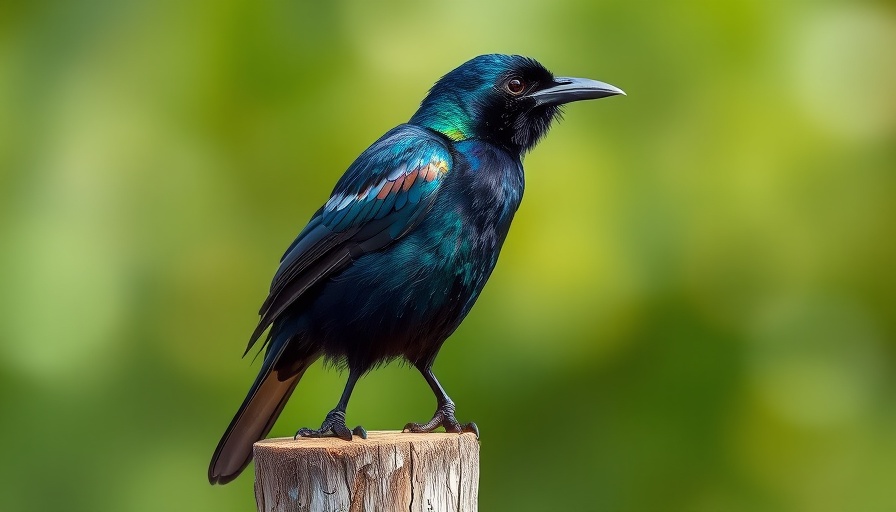
Exploring the Enigmatic Grackle: A Common Bird with Uncommon Features
Grackles are fascinating birds, well known for their loud calls and striking presence. Spanning six distinct species across the Americas, these birds represent a captivating segment of our avian diversity. Males often boast iridescent black feathers, while females exhibit a rich assortment of brown tones. The contrasts between their colors hint at the unique roles they play in their ecosystems.
The Sounds of Grackles: A Chorus of Character
The calls of grackles are not just noise; they are rich, distinctive sounds that vary across species. For instance, the Common Grackle resonates throughout the eastern U.S. and Canada, filling spaces with its notorious squawking. Meanwhile, the coastal Great-tailed Grackle congregates in staggering numbers, transforming urban and natural habitats alike into soundscapes that are uniquely their own.
Cultural Significance and Misunderstandings
Often considered pests, grackles are overlooked in discussions about biodiversity and ecosystem health. Their loud antics and propensity to flock can lead to misunderstanding their valuable roles as scavengers and indicators of environmental shifts. Observing these birds can cultivate appreciation for their resilience and adaptability, reminding us to celebrate even the most common among us.
Learning from the Past: Protecting Our Feathered Friends
The extinction of the Slender-billed Grackle in the mid-1900s serves as a somber reminder of the fragility of wildlife. Once thriving in the marshes of Mexico City, this loss underscores the necessity of conservation efforts to protect grackle habitats and promote biodiversity. To witness these birds in their various habitats helps to appreciate their role in the natural world.
Celebrate Grackles: Join the Community
As we encounter grackles in our neighborhoods, let's share our stories and observations with communities like BirdNote. Engaging with fellow bird enthusiasts not only enriches our understanding of these birds but fosters a sense of stewardship towards their preservation.
 Add Row
Add Row  Add
Add 




Write A Comment